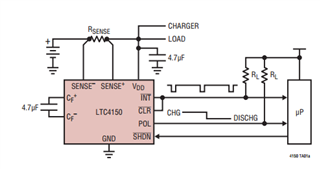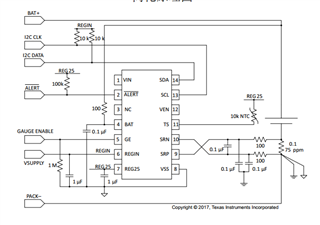Hi team,
Here are some problems of specs that need your help.
1: spec states that since the monitor meter does not need to be energized to measure all discharge activity. Is the power here taken directly from the detection tube teach? Without power, how is the data for monitoring discharge activity stored? Is it stored in flash? After that power is applied, then read out?
2: From the pin definition, the BAT pin is said to be a Power Connection, but the Voltage measurement input and can be left floating or tied to VSS if not used. Where does the chip rely on for power if not used?
3: What parts of the chip are powered by REG25, the built-in LDO? If REGIN is not powered, or if GE is grounded, can the chip continue to monitor the discharge activity?
4. Does it mean that VREGIN cannot write to FLASH if it is below 2.7V? Read operation is possible?

5. From SPEC's schematic diagram to see Rsense is close to the negative terminal of the battery, see another linear coulometer LTC4150 is close to the positive terminal of the battery, I wonder what is the difference and tell. Have an impact on the consumption of flow?


6. It says here that the chip can only choose one mode of operation at the same time, and the three modes of operation cannot be actively switched. Is this mode switched by the chip itself? Are the three modes always different for different materials of the battery? Or does the same battery use different modes according to the different stages of battery discharge? What is the relationship between these three modes of operation?

7.Is SOH mode an algorithm for Li-Mn batteries that determines the exact current charge based on the current battery voltage and temperature? Does it use the linear relationship between voltage and charge? The relationship is not linear. Is TermV here from the battery manual? Or is this algorithm just knowing the approximate battery level? Or is it just an interrupt source used to trigger an alarm?

8. Is the EOS mode an algorithm for thionyl chloride batteries that calculates internal resistance by calculating voltage current temperature to get the exact battery charge relationship? Or is it the same interrupt source that triggers the alarm as in question 7? Is there an exact linear relationship between internal resistance and charge?
9. The chip output REG25, I see the spec also gives ALERT, TS do pull-up, this pull-up source can be replaced with REGIN? Or can both?

